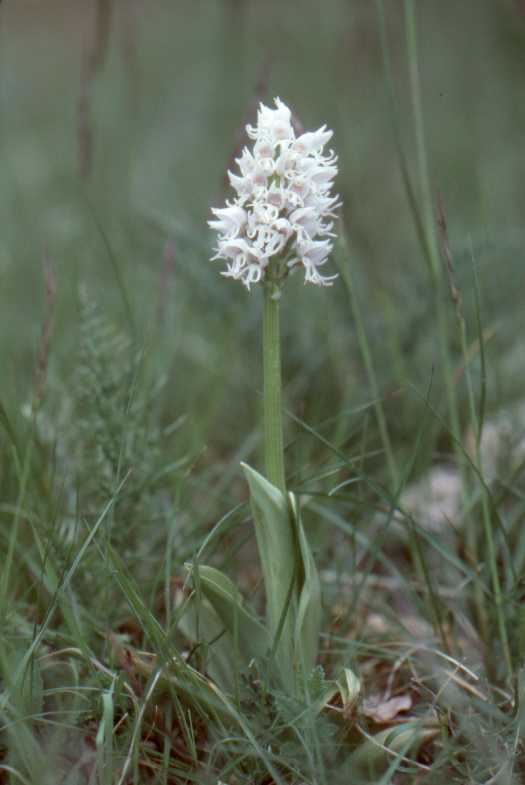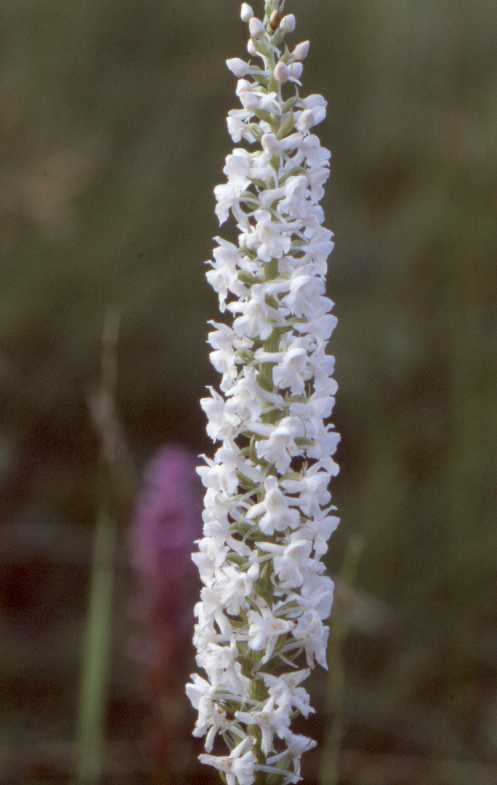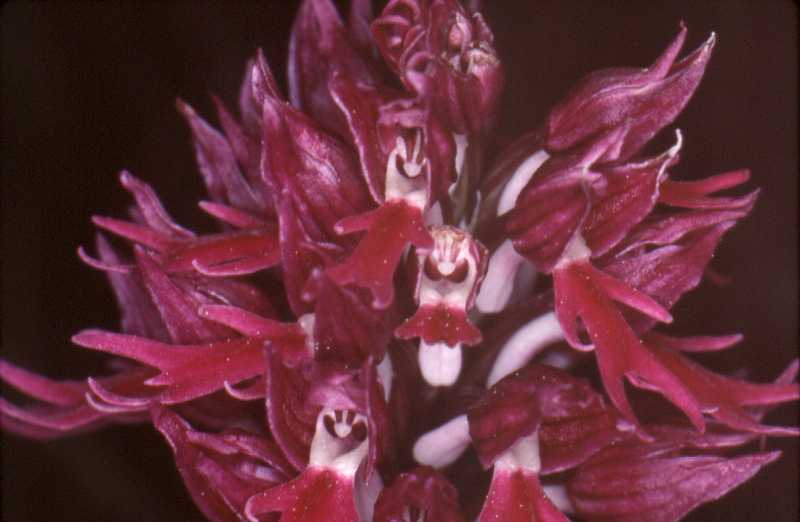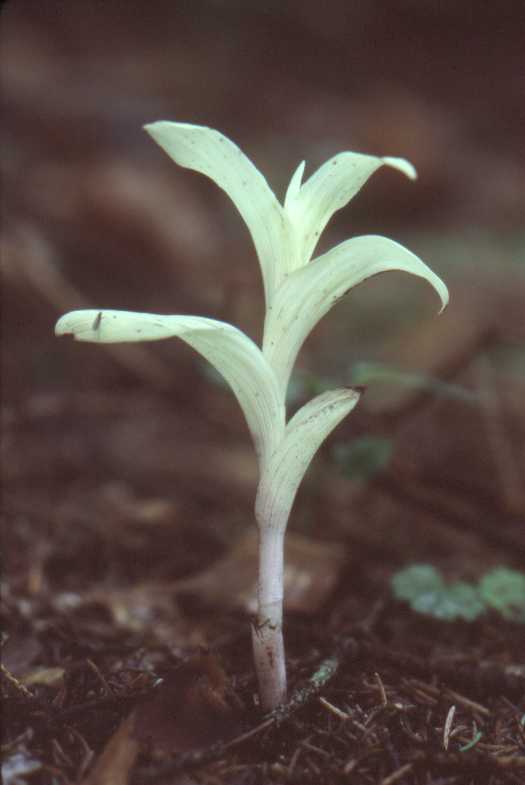 Without
doubt hybridisation of wild orchid species is a very interesting aspect. But
also very interesting are variations of colours. This means, rare and spontaneously
appearing colours, which are differing from the normal type and which are
not situated within the normal variability of the species. In 99 percent such
variations in colours are found in the flowers. This is not surprising, because
especially the flowers often are coloured by different pigments.
Without
doubt hybridisation of wild orchid species is a very interesting aspect. But
also very interesting are variations of colours. This means, rare and spontaneously
appearing colours, which are differing from the normal type and which are
not situated within the normal variability of the species. In 99 percent such
variations in colours are found in the flowers. This is not surprising, because
especially the flowers often are coloured by different pigments.
Such colour variations often are of genetic nature. Somewhere in the chain of making colours there is a fault, so no colours at all or only some special pigments can not be synthesised. Or it is not enough coulour. Very rarely the vegetative parts are of abnormous colours. In such cases the plant is not able to synthesise chlorophyl, so the leaves and stalks are of rose ore white tone. Variations of colours are known from many species and are possible by nearly all species. Often they are easy to recognise between the many specimens of normal colours.
Most of the orchid species are highly specialised concerning pollination by insects. One distinguishing mark for this insects is the colour of the flowers. So it is not surprising, that pollination is disturbed in the case of unusual colours of the flowers. This may be the reason for the fact, that variations of colours often appears isolated, although such plants are fertil, contrary to the orchid hybrids, which most are steril.
 Best
known are the albinos. Such plants are not able to produce any flower pigments.
Within the species Ophrys the labellums of such albinos are yellow-green,
while the sepals are white. Concerning the other species, the flowers often
are totally white, rarely of cream colour. For examples please see Orchis
purpurea, Gymnadenia densiflora
and Ophrys splendida. Some
authors propose to name such spontan and single appearing albinos and call
them var. albiflora, alba or flavescens. From the scientific point of view
this is not necessary.
Best
known are the albinos. Such plants are not able to produce any flower pigments.
Within the species Ophrys the labellums of such albinos are yellow-green,
while the sepals are white. Concerning the other species, the flowers often
are totally white, rarely of cream colour. For examples please see Orchis
purpurea, Gymnadenia densiflora
and Ophrys splendida. Some
authors propose to name such spontan and single appearing albinos and call
them var. albiflora, alba or flavescens. From the scientific point of view
this is not necessary.
On the other side also hyperchromie, which means an overpigmentation can be found. Such specimens are producing much more colours than they normally do. Rarely within the species Ophrys sometimes this can be found within the species Orchis and Dactylorhiza. For examples please see Orchis mascula, Orchis purpurea and Ophrys tenthredinifera. When such variations of colours can be found more often and in different regions, some authors call them a own subspecies. So for example within the species Anacamptis, where especially in the Alps. Anacamptis pyramidals ssp. tanayensis with dark red flowers is described. The Anacamptis pyramidalis of the mediterranean region on the other side normally have rose to white flowers, while the rare specimens of dark pigments are wrong colours. An other exemple is the variantion „rubra" of Orchis italica, which can be found very rarely between normaly coloured plants.
 Not
only albinos and overpigmented specimens can be found outdoors. There exits
also some other variations of colours, some of them you can see here. So some
plants are not able to produce the deep blue pigments of the labellum sign.
It looks white, while the other parts of the plant are of normal colours.
For examples please see Ophrys atrata, Ophrys
sphegodes and Ophrys splendida.
Other specimens don't have a labellum sign at all. See for Ophrys
crabronifera and Orchis ustulata.
Within the species Ophrys sometimes the normally red or reddish petals and
sepals are white or green. So Ophrys
tenthredinifera, normally a very constant species, rarely can have white
sepals, also a wrong colour. Ophrys holoserica
on the other side often has white
sepals, but green ones
are very rare and therefore a wrong colour.
Not
only albinos and overpigmented specimens can be found outdoors. There exits
also some other variations of colours, some of them you can see here. So some
plants are not able to produce the deep blue pigments of the labellum sign.
It looks white, while the other parts of the plant are of normal colours.
For examples please see Ophrys atrata, Ophrys
sphegodes and Ophrys splendida.
Other specimens don't have a labellum sign at all. See for Ophrys
crabronifera and Orchis ustulata.
Within the species Ophrys sometimes the normally red or reddish petals and
sepals are white or green. So Ophrys
tenthredinifera, normally a very constant species, rarely can have white
sepals, also a wrong colour. Ophrys holoserica
on the other side often has white
sepals, but green ones
are very rare and therefore a wrong colour.
 Other
plants are not able to produce enough pigments, or the chain of colour production
is cut, so only intermediary colours can be synthesised. In this case normally
red flowering plants are rose (Orchis
laxiflora), while the labellum of Ophrys is orange. Please click to Ophrys
holoserica and Ophrys lutea. The transitions
to the albinos are indistinct.
Other
plants are not able to produce enough pigments, or the chain of colour production
is cut, so only intermediary colours can be synthesised. In this case normally
red flowering plants are rose (Orchis
laxiflora), while the labellum of Ophrys is orange. Please click to Ophrys
holoserica and Ophrys lutea. The transitions
to the albinos are indistinct.
Some more examples for wrong colours you can find here. A very rare example for a wrong colour of vegetative parts is shown with Epipactis helleborine. Very rare you can find a wrong colour by a hybrid! Please see the marvellous Ophrys sphegodes x Ophrys fusca.